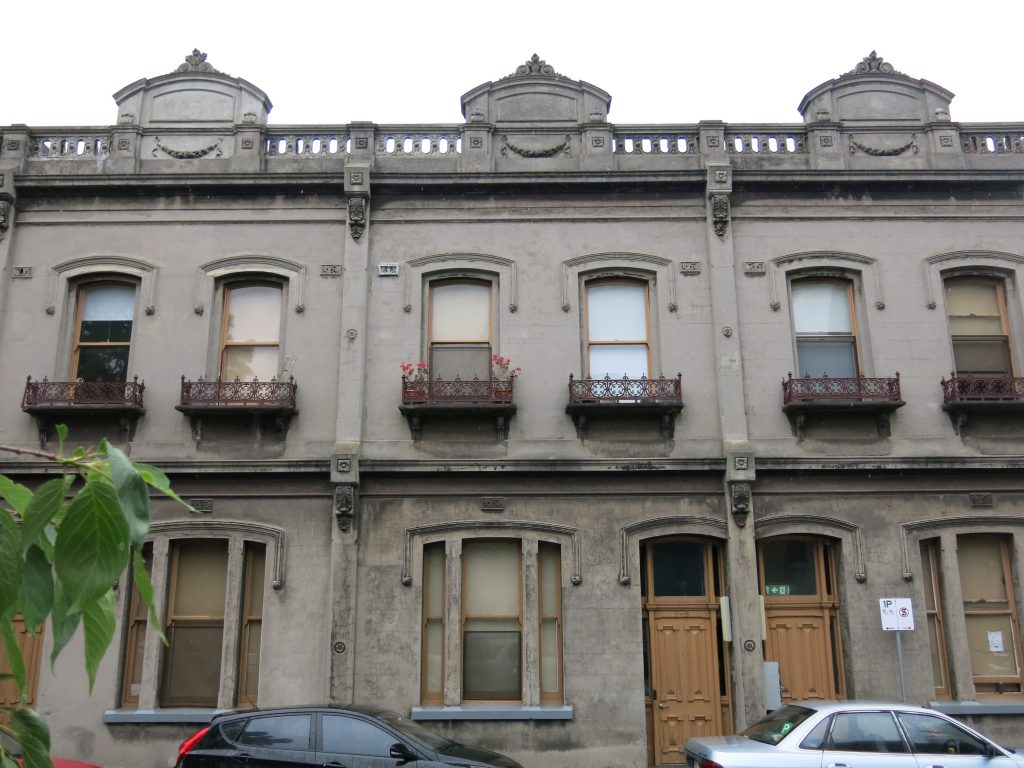Through the State’s Rooming House Conversion Program, our Layfield Street building has been undergoing renovations for just over two years now, converting the 22 rooming house rooms and 2 one-bedroom apartments into 25 self-contained studio apartments and a communal kitchen with space for meetings and community events. Whilst there have been some setbacks with building works due to dampness in foundations and coronavirus, the project has progressed well with the inside of the building now seeing new walls and floors constructed to reveal the new layout. It’s a very major transformation going on. We hope it will be completed by April 2020
Layfield St, once a respectable temporary housing option for people visiting the city from the country, and a longer term housing option for single workers, for example docks workers and council workers, mainly men, the image of rooming houses took a big downward spiral beginning in the late 1990s.
Up until the 1980s, Melbourne’s inner suburbs were full of rooming houses and boarding houses. Numbers had grown in the 1920s as the temperance movement led to government delicensing many small local pubs.
South Port was formed by local people in 1983 to take on a contract with the then Ministry of Housing to manage rooming houses bought by the Cain State government in 1980s as a response to loss of singles accommodation for people on low income.
A very large building comprising four large terrace houses joined together, Layfield Street was South Port’s largest and one of its oldest rooming houses. Located in the centre of one of Melbourne’s best preserved historical precincts, Emerald Hill, the building is highly historically significant, and beautiful. While under South Port’s management it has many times been used as set for film producers making historical dramas set in inner Melbourne, eg Squizzy Taylor.
We first took it on in 1984 thanks to some snappy negotiating by then South Melbourne Council head social worker, Heather McKee, and senior Council management. An all-men rooming house, once as large as 30 rooms, that beautiful historical building has seen some happy, sad, moving and heart-warming things go on between its walls.
In the early days it was as large as 32 rooms. Under South Port’s management this was scaled back over the years to 24, as some of the early rooms were not much bigger than broom cupboards! While we don’t readily share the darkest stories, it suffices to use the cliché: the building has had a very colorful history. In the 80s and 90s a culture of ‘don’t tell the office’ prevailed as the male residents reserved the right to sort out their own disputes. Old gentlemen, determined to die in their own home, seeing hospital as something like hell, commonly hid their growing ill health from the outside world. A conspiracy to rob the storage shed of the local op shop was uncovered by the discovery of about 50 garbage bags full of second hand clothes in a storeroom in the 1990s.
For us, big parts of rooming house management involved supplying toilet paper and light globes, emptying the coins from the communal phones and washing machines, and mediating over disputes about mess in kitchens and bathrooms and the whereabouts of personal foodstuffs stored in communal fridges. Highly skilled work!
While we look back on those times with a strange kind of fondness, in today’s risk averse climate the old Layfield Street rooming house style could never be tolerated.
And as homelessness grew in Melbourne in the long wake of the closure of the ‘mental institutions’, governments made new rules that restricted intake to social housing to people on pensions and benefits. That move changed rooming houses in Melbourne forever. As a further blow, the image also took a huge negative hit with the proliferation of suburban ‘rooming houses’ in 3 and 4-bedroom houses in the middle suburbs in the early 2000s. This style of rooming house became notorious for law-breaking, sub-standard living conditions, high rents and exploitation of the poor and vulnerable.
Thus, the days of the dignified rooming house were over.
In 2008, with increasing frequency of nasty incidents, South Port resolved to take up every offer of government funding to have its rooming houses converted to self-contained apartments. We are proud to say that Layfield Street, which by 2017 had become plagued by problems of squatting and drugs, is the final chapter of this very long story.
The current renovation is completely gutting the building, extending out the back, and creating 25 good sized studio apartments and a community room. We look forward to rehousing Layfield St in the coming year.
Author: Janet Goodwin – CEO, South Port Community Housing Group


